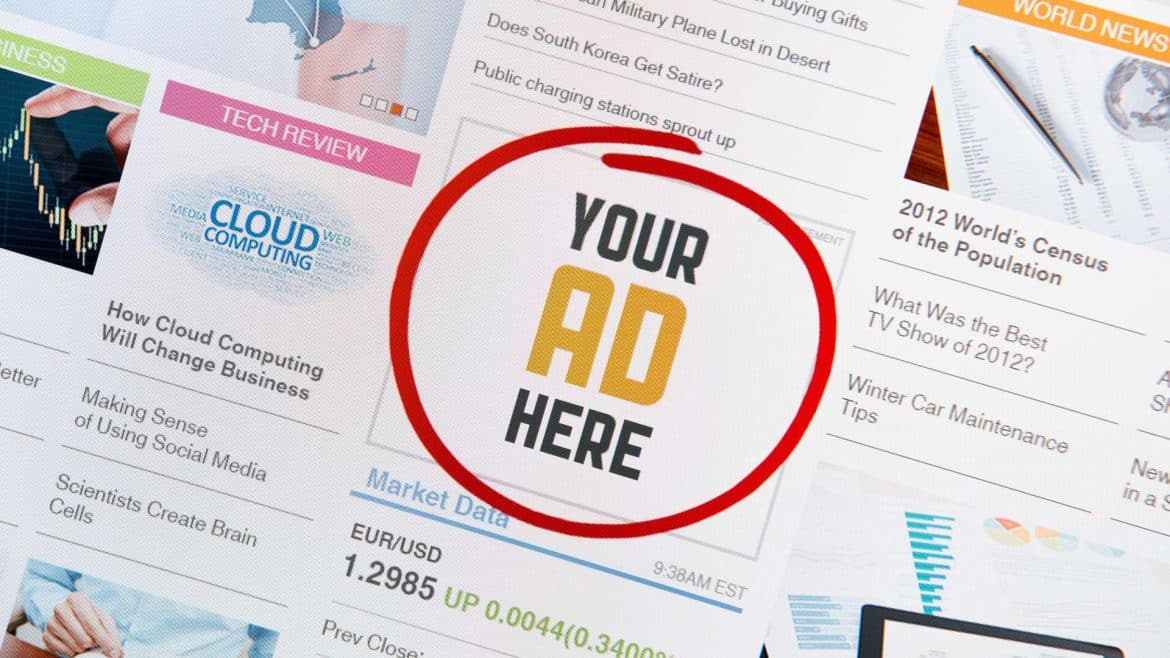Marketing

Rethinking Return on Advertising Investment
Bold Strategies to Transform Small Business Advertising
In the ever-evolving landscape of small business advertising, the pursuit of return on investment (ROI) often feels like a relentless numbers game. Click-through rates, conversion metrics, and ad spend efficiency dominate the conversation, pushing businesses to optimize every dollar for maximum visibility. While these traditional strategies have their place, they often overlook a crucial truth: not all value in advertising is immediately quantifiable.
What if the most impactful advertising doesn’t look like advertising at all? What if the true ROI of a campaign lies not just in direct sales, but in the ripple effects of trust, influence, and reputation? For small businesses operating with limited budgets, these unconventional perspectives on advertising ROI offer a refreshing way to rethink how success is measured and achieved.
This article explores five thought-provoking questions designed to challenge the status quo of small business advertising. Each section sheds light on a different, often overlooked angle:
The Invisibility Paradox — Can non-promotional community engagement outperform traditional ads? This section delves into how value-first approaches — like sponsoring local events or offering free educational content — can foster trust and long-term customer relationships.
The Time-Money Exchange Rate — When does personal outreach become less cost-effective than paid advertising? We provide a practical framework for assessing when it’s time to shift from grassroots efforts to scalable ad strategies.
The Anti-Target Customer — Should you advertise to influencers instead of your direct audience? This unconventional tactic focuses on influence mapping and leveraging key connectors who can amplify your brand’s reach.
The Regret Minimization Framework — How can future-oriented thinking reshape your ad strategy? By considering the regret of overspending versus the regret of missed opportunities, this section helps businesses find a balanced, forward-thinking approach.
The Advertising Sabbatical — What happens when ad budgets are redirected to remarkable customer experiences? We explore how investing in memorable moments can generate organic word-of-mouth far beyond a typical campaign’s reach.
By pushing past the traditional ROI mindset, small businesses can uncover hidden opportunities, build authentic connections, and craft advertising strategies that resonate on a deeper level. Let’s dive into these unconventional questions and discover what truly drives sustainable growth.

The Invisibility Paradox
Central Question:
What if your most effective advertising is the advertising no one recognizes as advertising? How might cultivating authentic community presence or solving public problems create better returns than explicit promotional content?
Rethinking Visibility in Advertising
Traditional advertising is designed to grab attention. It interrupts, announces, and demands recognition—whether through eye-catching visuals, persuasive copy, or repetitive exposure. Yet, in an era where consumers are inundated with ads, they have become experts at tuning them out. The Invisibility Paradox suggests that the most effective advertising may not look like advertising at all. Instead of demanding attention, it earns trust. Instead of pushing a message, it embeds itself into meaningful experiences.
Key Considerations
- Beyond Recognition: Conventional advertising thrives on being seen and remembered. However, invisible advertising is integrated into real-life interactions, making it feel organic rather than forced. A local bookstore that offers free reading spaces and community events may not explicitly promote its books, but it becomes a cornerstone of literary culture in the area. Over time, customers associate the space with value, leading to natural loyalty and purchases.
- Value-First Approach: A business that provides genuine value—whether through education, entertainment, or community service—creates deeper engagement. Unlike transactional marketing, this approach fosters goodwill and positions the brand as an asset rather than an interruption.
- Trust Metrics: Measuring ROI in invisible advertising requires different metrics. Instead of focusing on direct conversions, businesses should track factors like brand sentiment, engagement levels, customer retention, and organic referrals.
Practical Applications
1. Community Problem-Solving Initiatives
Businesses that contribute to solving real problems naturally earn goodwill. A small IT service provider that offers free cybersecurity workshops to local businesses isn’t just teaching—it’s showcasing expertise and building trust. This makes them the go-to provider when companies need professional services.
2. Educational Content That Serves First, Sells Second
Many businesses hesitate to give away knowledge for free, fearing it undermines sales. However, sharing expertise can position a brand as an authority. A local bakery that posts free baking tutorials might not sell every viewer a cake immediately, but it strengthens its brand affinity, leading to long-term customer loyalty.
3. Public Space Improvements with Subtle Branding
Sponsoring community enhancements—like funding a park bench, repainting a playground, or maintaining a public garden—associates a business with goodwill. A café that places branded book-sharing stations around town doesn’t need to plaster its name everywhere; the experience itself serves as a form of silent yet powerful advertising.
The Long-Term ROI of Invisible Advertising
The effectiveness of invisible advertising lies in its ability to cultivate relationships rather than just transactions. A yoga studio that hosts free mental health workshops may not see an immediate surge in class sign-ups, but it establishes trust and a sense of belonging. Over time, attendees become customers, and customers become brand advocates.
Trust-driven strategies don’t deliver the instant gratification of a high-converting ad, but they build something far more valuable: sustainable, long-term customer loyalty.

The Time-Money Exchange Rate
Central Question:
If you exchanged every pound in your advertising budget for your personal time instead, could you generate better results through direct customer outreach? At what “hourly rate” does paid advertising become more efficient than founder-led relationship building?
Rethinking Time as a Currency
For small business owners, time is often their most valuable — and most overlooked — resource. In the early stages, it’s natural to lean heavily on personal efforts: networking events, one-on-one conversations, and direct outreach. These founder-led activities build authentic relationships and trust, but they come with a hidden cost: time spent on customer acquisition is time not spent on strategy, operations, or innovation.
The Time-Money Exchange Rate challenges business owners to quantify the value of their time and identify the tipping point where direct outreach stops being cost-effective. Understanding this dynamic is crucial for scaling advertising efforts without sacrificing the personal touch that makes small businesses special.
Key Considerations
Founder Time Valuation: Many entrepreneurs fail to place a monetary value on their own time, treating it as an unlimited resource. To counter this, calculate your effective hourly rate:
Effective Hourly Rate = Annual Profit / Annual Working Hours
If your business profits £50,000 annually and you work 2,000 hours a year, your time is worth £25/hour. This figure becomes the baseline for deciding whether personal outreach or paid advertising offers a better return.
- Scalability Threshold: While founder-led sales might convert at a higher rate initially, it’s not infinitely scalable. There’s an inflection point where the sheer volume of outreach required surpasses what one person can handle. Recognizing this threshold prevents burnout and highlights when automation or paid strategies need to step in.
- Relationship Quality: Automated ads might generate leads faster, but personal outreach often fosters stronger relationships and long-term loyalty. The question isn’t just about speed — it’s about the quality of customer relationships. Are the customers you win through direct outreach more valuable over time than those acquired through ads?
Practical Framework
1. Calculate Your Effective Hourly Rate: Use the formula above to place a concrete value on your time.
2. Track Acquisition Time: Measure how long it takes to convert a customer through personal methods — networking, follow-ups, direct messaging, etc. If it takes you 5 hours to secure a £500 sale, your time investment is £100/hour.
3. Compare with Paid Acquisition Costs: Review your paid advertising data (cost per lead, conversion rate, etc.). If an ad campaign yields customers at £50 each, and your personal outreach costs you £100/hour, paid advertising might already be more efficient.
4. Find the Crossover Point: Identify the moment when your hourly cost of personal outreach exceeds the cost per customer acquired through paid methods. This is the tipping point where scaling ads becomes a smarter choice.
A Hybrid Approach: Balancing Automation and Authenticity
The solution isn’t always all-or-nothing. Smart small businesses use a hybrid model: automation for initial outreach and personal time for high-probability conversions. For example:
- Use targeted ads or email funnels to generate interest.
- Personally follow up with warm leads, investing time only in those closest to purchasing.
This approach preserves the authenticity of founder-led relationships without sacrificing scale.
Ultimately, the Time-Money Exchange Rate empowers small business owners to think critically about how they spend their most precious resource — time — and when to strategically shift gears from personal hustle to scalable growth.

The Anti-Target Customer
Central Question:
What would happen if you deliberately advertised to people who are NOT your ideal customer, but who influence those who are? Could targeting the influencers of your customers generate better ROI than direct customer acquisition?
Rethinking Who Holds the Power to Convert
Most small businesses pour their advertising efforts into reaching their “perfect” customer — the person most likely to buy their product or service. But what if the most effective way to win those customers isn’t by talking to them directly, but by winning over the people who influence their decisions?
This is the core idea behind the Anti-Target Customer approach: shifting your focus from end-users to the gatekeepers, advisors, and trusted voices that shape their choices. For small businesses, this strategy can unlock unexpected paths to growth by leveraging the power of indirect influence.
Key Considerations
- Influence Mapping: The first step is identifying the people who hold sway over your target customers’ decisions. These aren’t always obvious. For example:
- A children’s toy company may find that grandparents — not parents — drive purchases by giving gifts.
- A B2B software provider might realize that while CEOs sign off on contracts, it’s the IT manager or administrative assistant who researches and recommends the software.
- A wedding photographer could focus on building relationships with wedding planners or venue coordinators, whose referrals carry more weight than a random ad seen by an engaged couple.
- Indirect Messaging: Once you’ve mapped out your anti-target customers, the next challenge is crafting messages that resonate with them — even though they won’t be the ones using your product. The key is to highlight how endorsing your offering benefits them:
- How does recommending your business make them look good or make their job easier?
- Can you frame your product as a thoughtful gift, a smart business solution, or a way to boost their reputation?
- Influence Valuation: Not all influencers are created equal. A glowing recommendation from a niche blogger with a loyal following might be more impactful than a lukewarm mention from a high-profile personality. Measuring the “weight” of an influencer’s voice — based on audience trust and alignment with your brand — is crucial in determining whether this approach will deliver a strong ROI.
Experimental Design
To test the Anti-Target Customer strategy, small businesses can use structured experiments:
- Split Testing: Run parallel campaigns — one targeting direct customers and the other focusing on their key influencers. For example, a fitness coach might run one ad campaign aimed at busy professionals (the end-user) and another targeting HR managers looking to offer workplace wellness programs.
- Referral Tracking: Create specialized referral links, promo codes, or landing pages for influencer-targeted ads. This allows you to trace which sales came from direct targeting versus influencer outreach.
- Conversion Quality Analysis: Track not just how many customers each campaign brings in, but how valuable those customers are over time. Are influencer-referred customers more loyal, have higher lifetime value, or make larger purchases?
Thought-Provoking Examples
The Anti-Target Customer approach thrives on creativity. Consider these examples:
- Children’s products: A toy brand might create heartwarming ad campaigns aimed at grandparents, highlighting the joy of giving thoughtful gifts — even though the toys are for children.
- B2B services: An office supply company might target executive assistants rather than business owners, recognizing that assistants often control purchasing decisions.
- Professional services: A financial advisor could build relationships with estate attorneys or realtors, knowing these professionals frequently refer clients in need of financial planning.
The Hidden Power of Indirect Influence
By shifting focus from direct customers to those who influence them, small businesses can tap into networks of trust and recommendation that traditional ads can’t reach. This strategy may not produce instant results — but when an influential voice endorses your brand, the ripple effect can lead to higher-quality leads and more organic growth.
Ultimately, the Anti-Target Customer method pushes businesses to think beyond linear advertising and embrace the subtle but powerful art of influence.
The Regret Minimization Framework
Central Question:
Five years from now, which would you regret more — spending too much on advertising that didn’t work, or spending too little on advertising that could have transformed your business? How does this thought experiment change your risk tolerance?
Rethinking Risk in Advertising
Advertising decisions often feel like a gamble, especially for small business owners with limited budgets. The fear of wasting money on ineffective campaigns can be paralyzing, leading many to take a cautious, incremental approach. But what if the greater risk isn’t overspending — it’s underspending?
The Regret Minimization Framework flips the traditional ROI mindset by adding a powerful psychological element: future regret. Instead of solely asking, “What’s the safest option right now?” this framework pushes you to ask, “What decision will I wish I had made five years from now?” By reframing risk through the lens of future regret, you gain a clearer perspective on your true risk tolerance and the hidden costs of inaction.
Key Considerations
- Psychological Barriers: Loss aversion — the instinct to avoid losses rather than chase gains — skews how we view advertising risk. Spending £5,000 on ads that flop feels like a visible, painful loss. But the cost of not investing in a bold ad strategy — missing out on potential growth — is invisible, making it harder to weigh. The Regret Minimization Framework helps surface this hidden risk.
- Opportunity Cost Visibility: The “cost of inaction” is real but often overlooked. Consider two scenarios:
- You invest heavily in advertising, and it doesn’t work — you lose money.
- You invest too little, missing a breakthrough opportunity — you lose momentum.
By visualizing these side by side, you make the opportunity cost as tangible as the monetary cost, allowing for a more balanced decision.
- Regret-Adjusted ROI: ROI typically focuses on immediate, measurable returns. Regret-adjusted ROI factors in the long-term impact of missed opportunities. It asks: What is the potential upside I’m sacrificing by playing it safe? This doesn’t mean advocating reckless spending, but acknowledging that inaction carries its own price.
Decision-Making Process
- Envision Your Future Business: Project yourself five years forward. Imagine two versions of your business:
- One where you took bold, strategic risks with advertising.
- One where you held back, sticking only to what felt “safe.”
- Identify the Stronger Regret: Ask yourself:
- Would I regret wasting money on ads that didn’t work?
- Or would I regret never testing the bold ideas that could have propelled my business forward?
- Adjust Risk Tolerance: If the fear of missed growth outweighs the fear of wasted money, it may be time to push past conservative ad strategies.
- Prevent Sunk Cost Fallacies: Build in regular reassessment intervals — monthly or quarterly — to evaluate ad performance objectively. This prevents you from throwing good money after bad or pulling back too soon due to short-term fear.
Deeper Questions
- How does your personal risk tolerance shape your business’s growth? A risk-averse founder might unintentionally cap their business’s potential. Recognizing this bias allows you to step outside your comfort zone strategically.
- Can you structure ad investments to minimize maximum regret? For example, you might allocate 70% of your ad budget to proven strategies and 30% to experimental campaigns. This way, you’re never fully exposed but still leave room for bold moves.
- What low-risk tests could reduce future regret? Consider running small, controlled ad experiments. Testing new platforms or creative ideas on a limited budget lets you gather data without catastrophic risk.
Balancing Risk and Reward
The Regret Minimization Framework doesn’t encourage reckless spending — it encourages informed boldness. By factoring future regret into today’s decisions, small business owners gain a more complete view of risk, making it easier to invest in advertising strategies that could unlock meaningful growth.
Ultimately, the goal is to ensure that, five years from now, you can look back and say, “I took the right risks for my business” — rather than wondering what could have been.
The Advertising Sabbatical
Central Question:
What if you took your entire advertising budget for one month and instead used it to create one remarkable customer experience for your most vocal customers? Could the resulting word-of-mouth and social sharing exceed the value of traditional advertising?
Rethinking Advertising as an Experience
For most small businesses, advertising feels like a necessary but transactional process: spend money, get clicks, track conversions. But what if you paused the cycle for a month — not to cut costs, but to reinvest your ad budget in creating an unforgettable experience for your customers?
The Advertising Sabbatical challenges business owners to shift from promotion to emotion. It bets on the idea that a remarkable experience — one so unique and memorable that people can’t help but talk about it — can generate more organic buzz and brand loyalty than any ad campaign. The goal is to spark authentic conversations, turning happy customers into vocal advocates.
Key Considerations
- Experience Design: The heart of this strategy lies in crafting an experience that’s not just good — it’s shareable. It could be:
- A surprise VIP event for loyal customers, offering behind-the-scenes access or exclusive perks.
A personalized thank-you package, tailored to a customer’s interests, with a heartfelt note and unexpected gifts. - A community-driven project, like sponsoring a local event or beautifying a public space with the help of your most engaged supporters.
- The key is to create moments people feel compelled to share — not because you asked them to, but because the experience moved them.
- A surprise VIP event for loyal customers, offering behind-the-scenes access or exclusive perks.
- Amplification Strategy: A great experience is only half the battle — the other half is making sure the story spreads. Consider:
- Designing “Instagrammable” moments — visually striking setups that beg to be posted online.
- Creating custom hashtags or unique QR codes to track organic mentions.
- Encouraging participants to tag your business or share their experience in exchange for a small bonus (like a future discount or exclusive preview).
- Selection Criteria: Not all customers are equal when it comes to spreading the word. Prioritize those who are:
- Already vocal supporters of your brand — the ones leaving glowing reviews, tagging you on social media, or referring friends.
- Well-connected within your target audience — micro-influencers, community leaders, or respected voices in your niche.
- Passionate about your brand’s mission or story — because genuine enthusiasm fuels authentic advocacy.
Implementation Framework
Budget Reallocation: Calculate your typical one-month advertising spend. Let’s say it’s £2,000 — that becomes your budget for this extraordinary customer experience.
Experience Design: Brainstorm an experience that feels bold, brand-aligned, and inherently shareable. Ensure it’s something customers will talk about because they want to, not because you asked them to.
Strategic Selection: Hand-pick participants using the selection criteria above. This ensures your investment goes to those most likely to amplify the experience.
Seamless Sharing: Make sharing easy by providing clear hashtags, personalized thank-you posts they can reshare, or even pre-written captions they can tweak — but always keep it authentic.
Track the Impact: Set up tools to measure organic reach — using referral links, UTM codes, or tracking the use of your event hashtag.
Measurement Challenges
- Attribution Blind Spots: Word-of-mouth is notoriously hard to track. While you can monitor social shares and referral codes, many offline conversations won’t leave a digital footprint.
- Brand Affinity Metrics: How do you quantify a customer’s deeper emotional connection to your brand? Consider surveying participants post-experience to gauge loyalty and future purchase intent.
- Short vs. Long-Term Impact: Unlike ads, where results are often immediate, experiences build long-term goodwill. Success may not show up in next week’s sales but could reveal itself in sustained customer advocacy over months.
The Bigger Question: Is Delight the New Advertising?
Ultimately, the Advertising Sabbatical raises a deeper philosophical question: Is customer delight a form of advertising — or does it make traditional advertising irrelevant?
If you create such memorable experiences that your customers eagerly spread the word for you, the line between “advertising” and “customer service” starts to blur. In this model, your best marketing isn’t an ad — it’s the emotional impact you leave on the people you serve.
By embracing this mindset, small businesses stop chasing clicks and start cultivating conversations — and sometimes, that’s the most effective advertising of all.
Conclusion: Rethinking ROI — Beyond the Obvious
Small business advertising has long been driven by direct, measurable returns — clicks, conversions, and cost-per-acquisition. But as we’ve explored, true ROI often extends far beyond these surface-level metrics. By embracing unconventional approaches, small businesses can uncover hidden opportunities and build lasting connections that traditional ad strategies tend to overlook.
The Invisibility Paradox reminds us that not all advertising needs to announce itself — sometimes, the most impactful brand-building happens when you’re solving problems and adding value without a sales pitch. The Time-Money Exchange Rate pushes you to reconsider how your personal effort stacks up against paid ads, helping you strike a balance between grassroots outreach and scalable strategies.
With the Anti-Target Customer, we flipped the script entirely, questioning whether the fastest path to your audience might not be direct, but through their trusted influencers. The Regret Minimization Framework added a future-focused layer to decision-making, urging you to weigh the invisible cost of inaction just as heavily as the risk of overspending. Finally, the Advertising Sabbatical challenged the very definition of marketing — suggesting that investing in customer experiences might generate more authentic buzz than any ad campaign ever could.
What ties all these ideas together is a shift in mindset. Advertising isn’t just about pushing messages out — it’s about pulling people in. It’s not always about quick wins; sometimes, it’s about planting seeds that grow into long-term loyalty.
As you move forward, ask yourself:
- Are we measuring only what’s easy to track, or what truly matters?
- Are we investing in relationships, not just impressions?
- Are we brave enough to take risks, knowing the greatest losses often come from playing it safe?
By stepping outside the traditional ROI box, small businesses can craft advertising strategies that are not only effective but deeply resonant. Because at the end of the day, the most powerful marketing doesn’t always look like marketing — it looks like trust, creativity, and boldness.
So, what’s your next move? Will you follow the familiar path, or will you dare to redefine what advertising means for your business?



